Our initial conversation went something like this, Hey, sir.
You want to go to Cool School?
I pondered that for about a microsecond and responded in the affirmative.

The United States Air Force Arctic Survival School trains members of the military the skills to survive in extreme cold. Image: Senior Airman Sean Carnes/U.S. Air Force
I had no idea what Cool School was, but I was an Army Aviator.
Perhaps I could teach the instructors a few things about being cool?
It seemed I was an imbecile.
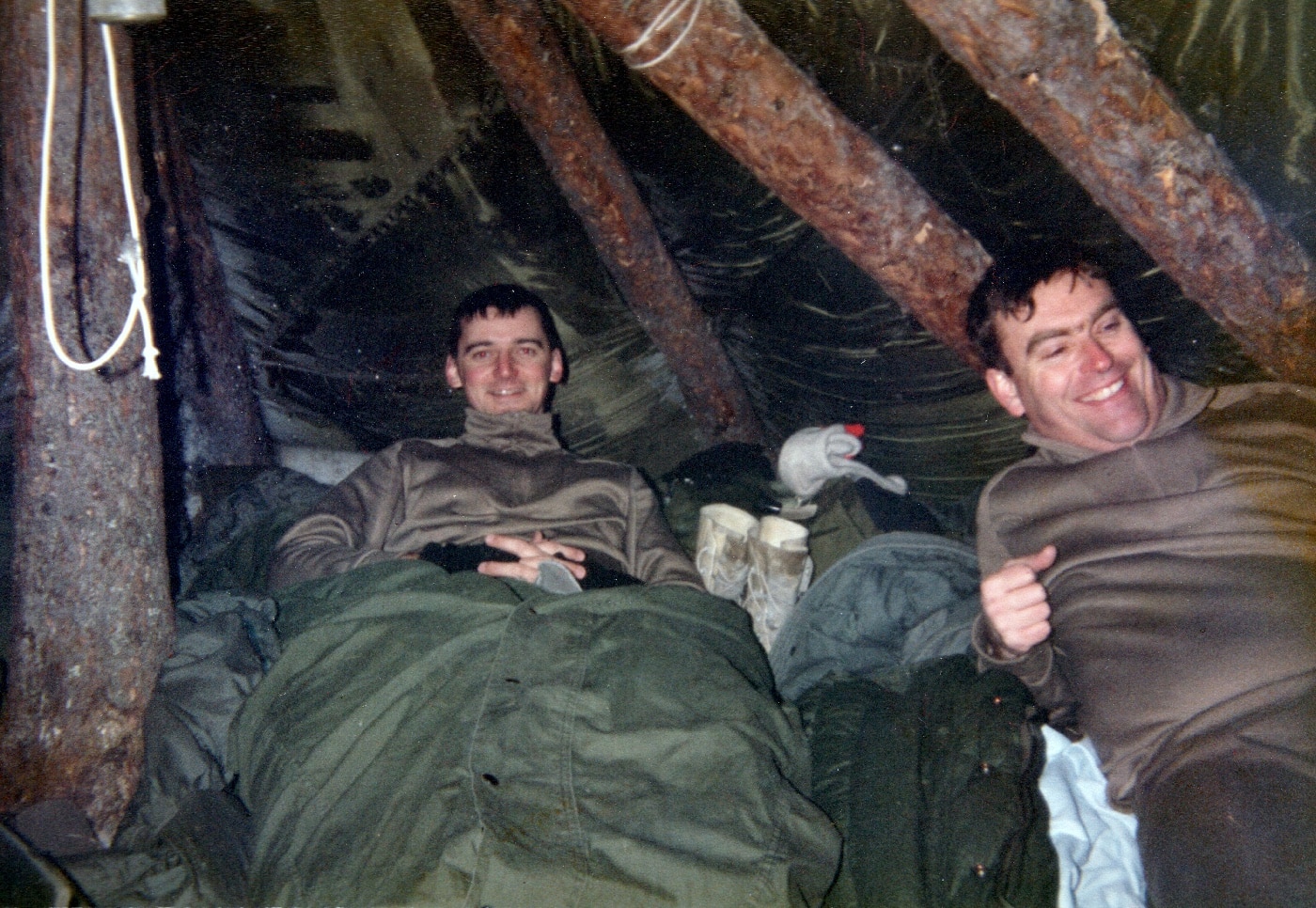
The author (left) enjoyed the relative warmth of his improvised shelter during his time in the Arctic Survival School. Image: Author
Those in the know called it the Air Force Food Appreciation Course.
Thats because there basically wasnt any.
By the time I got slotted for the class, it was butt cold.
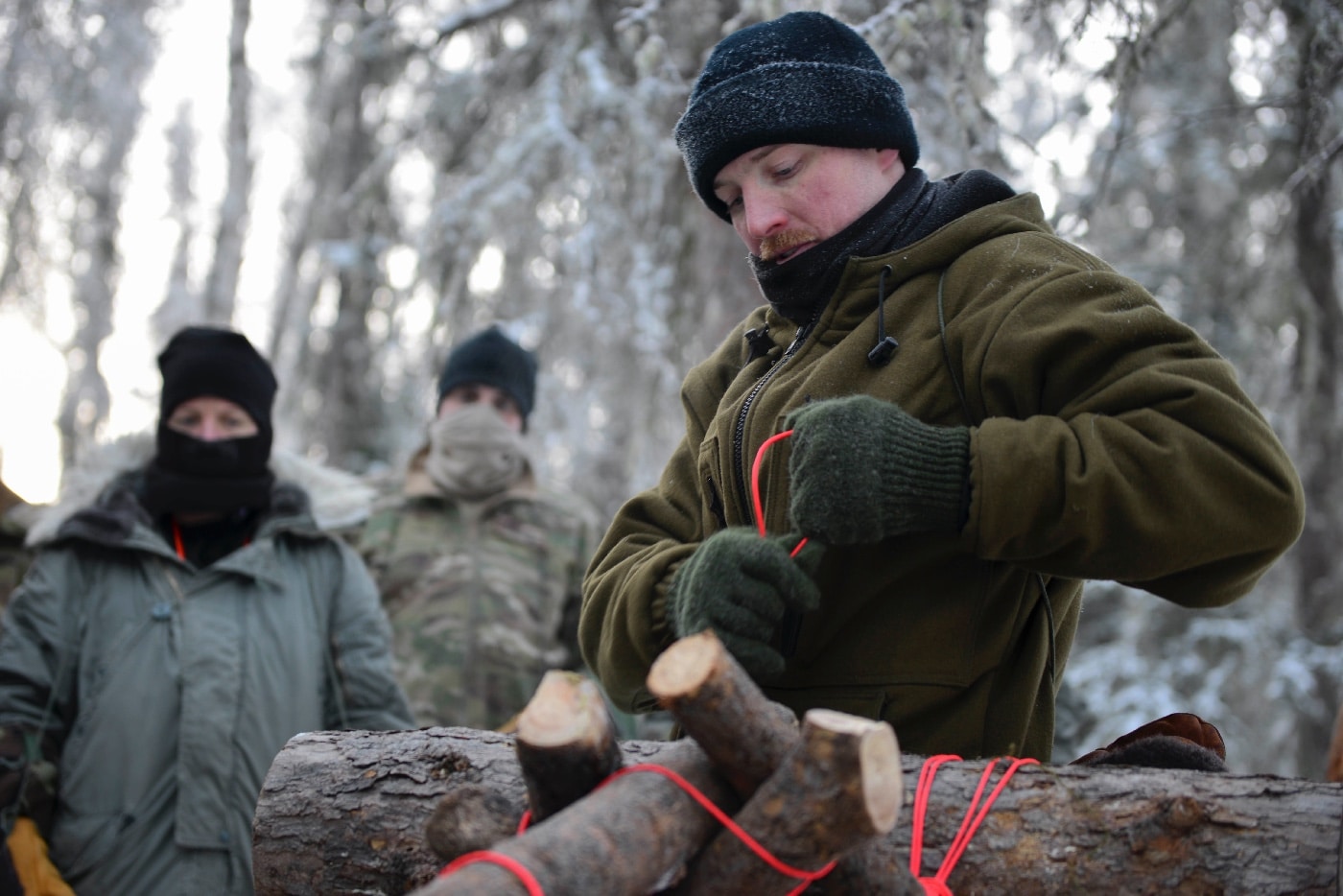
A Survival, Evasion, Resistance and Escape (SERE) specialist demonstrates how to set up a thermalized A-frame survival shelter. Image: Airman 1st Class Jose Miguel T. Tamondong/U.S. Air Force
The curriculum was actually fairly simple.
As this was an Air Force enterprise, there wasnt any yelling or screaming.
It was a gentlemans course.
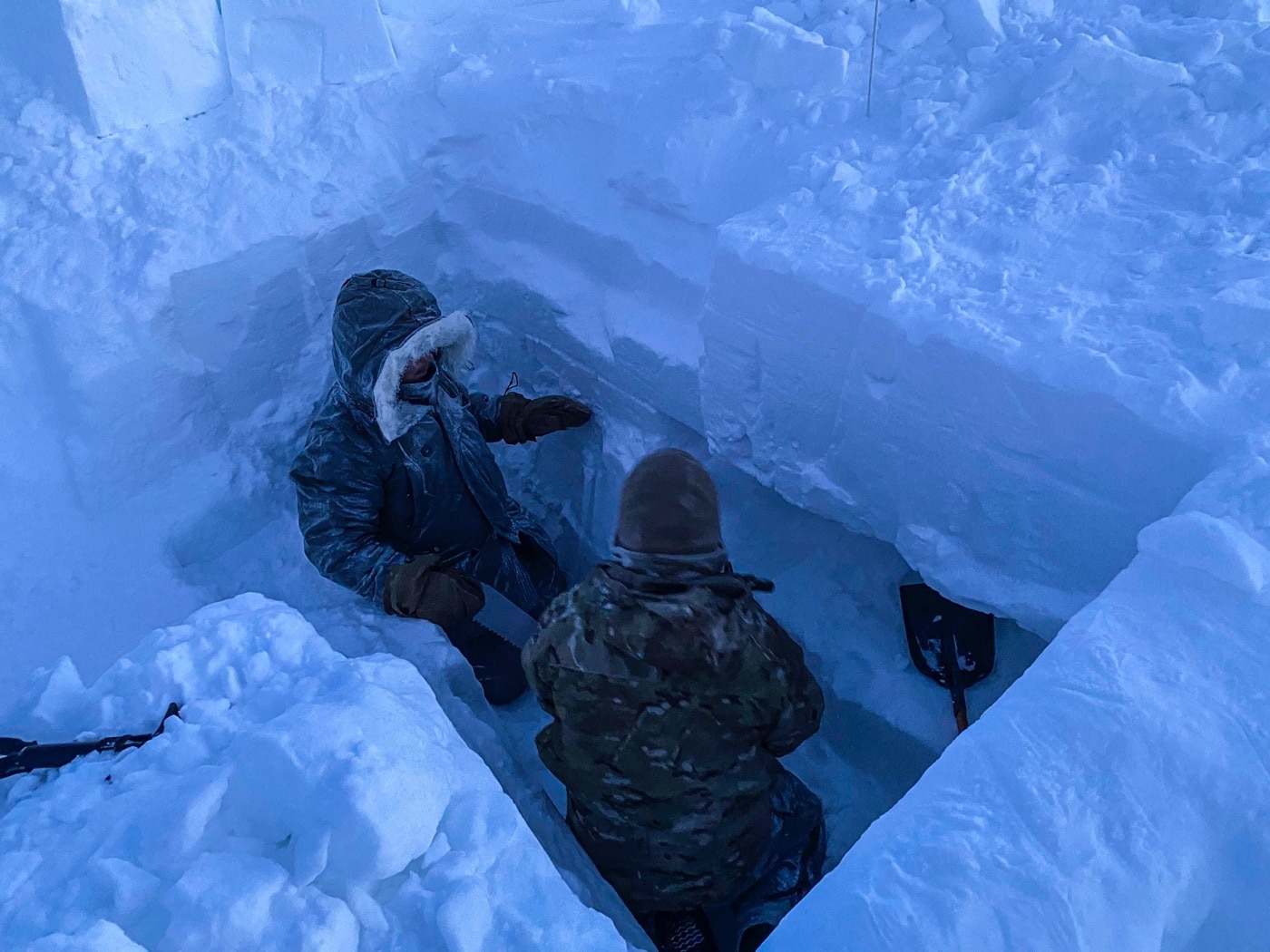
Survival, Evasion, Resistance and Escape (SERE) specialists dig a snow cave in Alaska. The snow caves served as shelter for the class participants. Image: Master Sgt. Ryan M. Dewey/U.S. Air Force
The objective was indeed simply to survive.
The first night was spent in a pre-built communal shelter made of logs.
The tiny thermometer I hung from my jacket told me it was 34 degrees below zero.
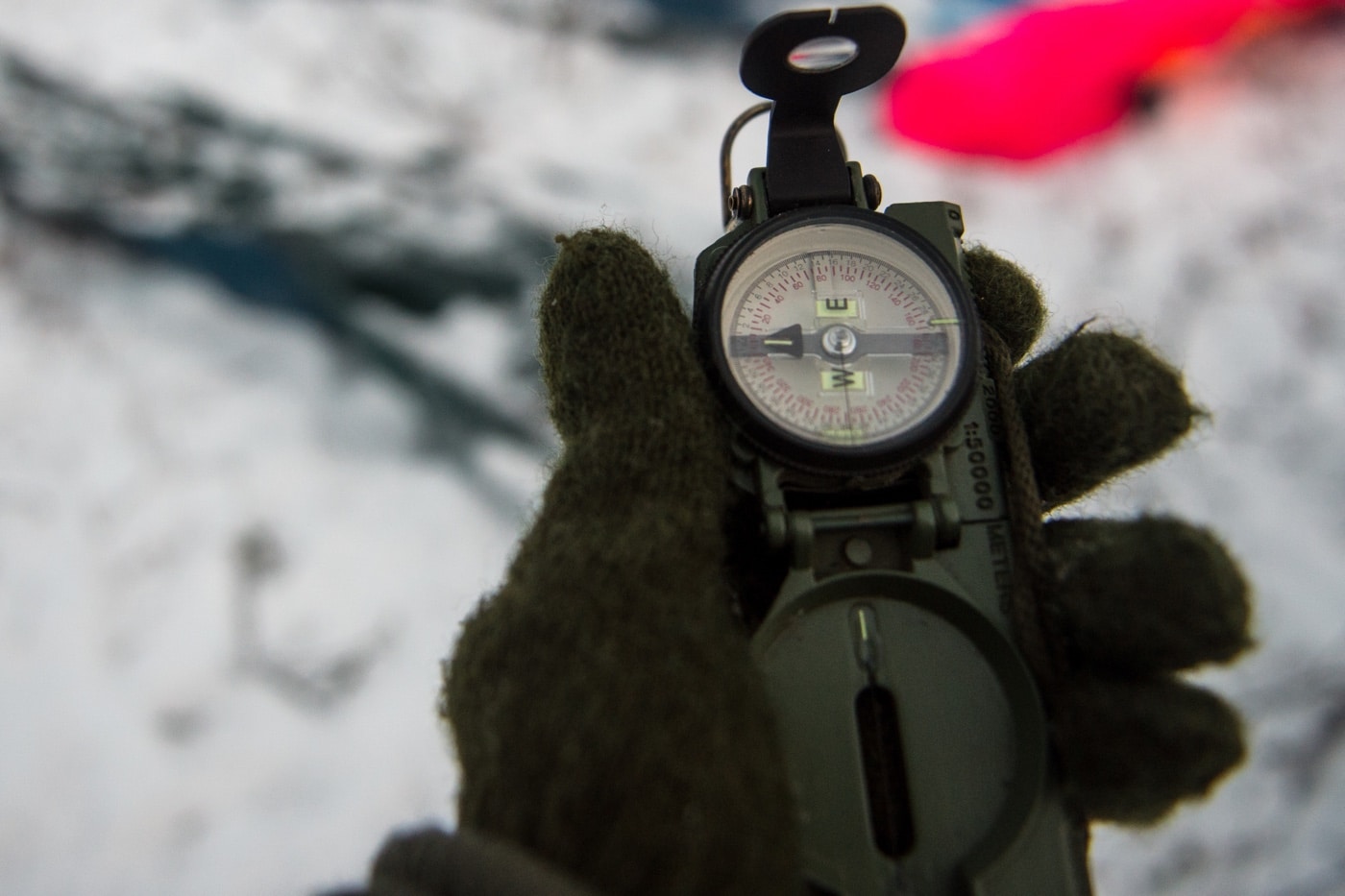
Arctic Survival School trains members of the military the basic skills to be able to survive in Arctic conditions in case they are ever isolated. Image: Senior Airman Sean Carnes/U.S. Air Force
One full day was spent crafting a snow cave.
The snow was maybe three or four feet deep.
It was also surprisingly hard work.
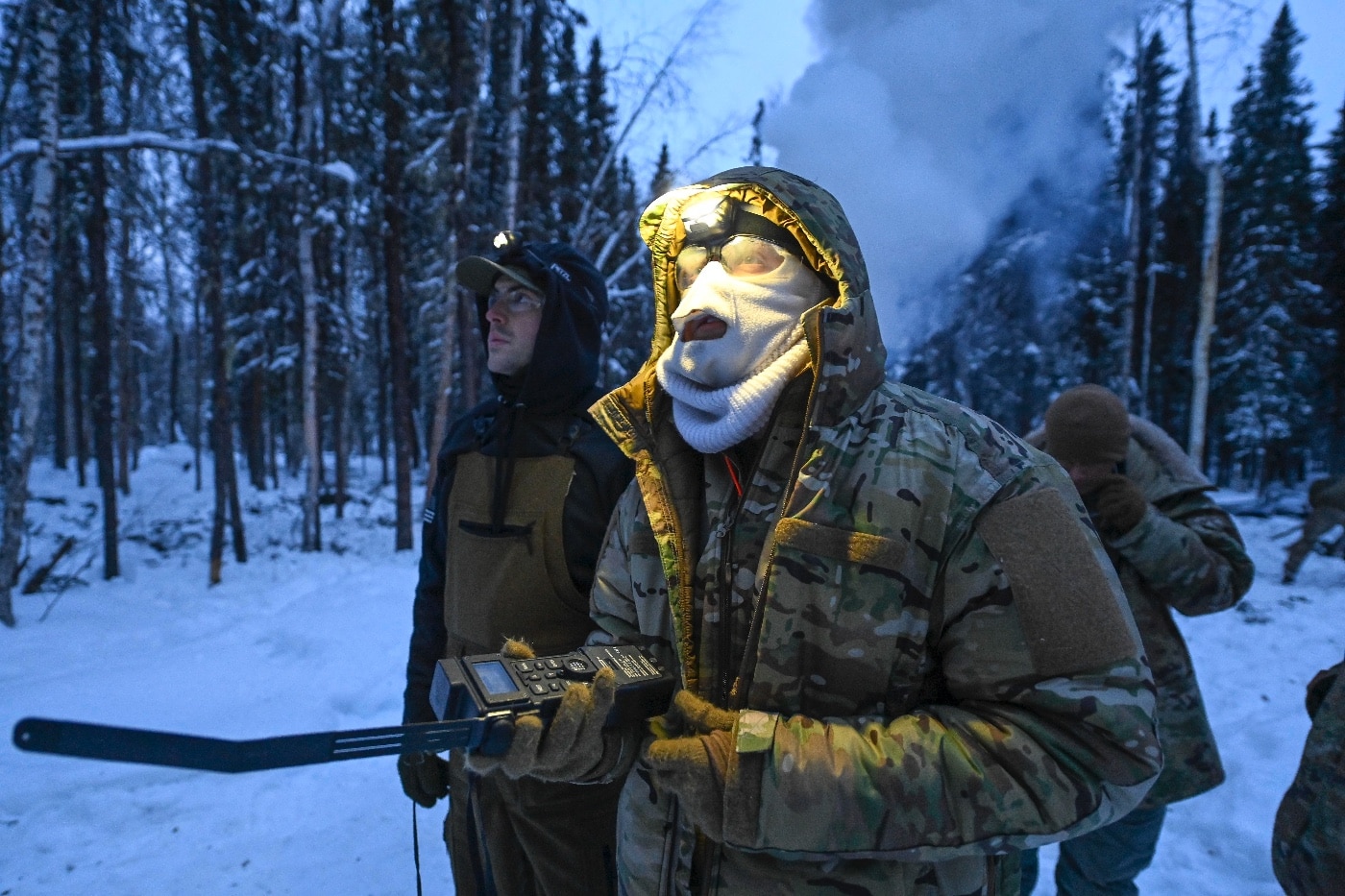
A SERE instructor teaches students how to vector a rescue helicopter on Eielson Air Force Base, Alaska. Image: Senior Airman Keith Holcomb/U.S. Air Force
Even at 30 below zero, I worked up a sweat underneath my arctic parka.
Additionally, the only source of potable water was snow.
The tool the military gives you to harvest water from snow is a small rubber bladder.
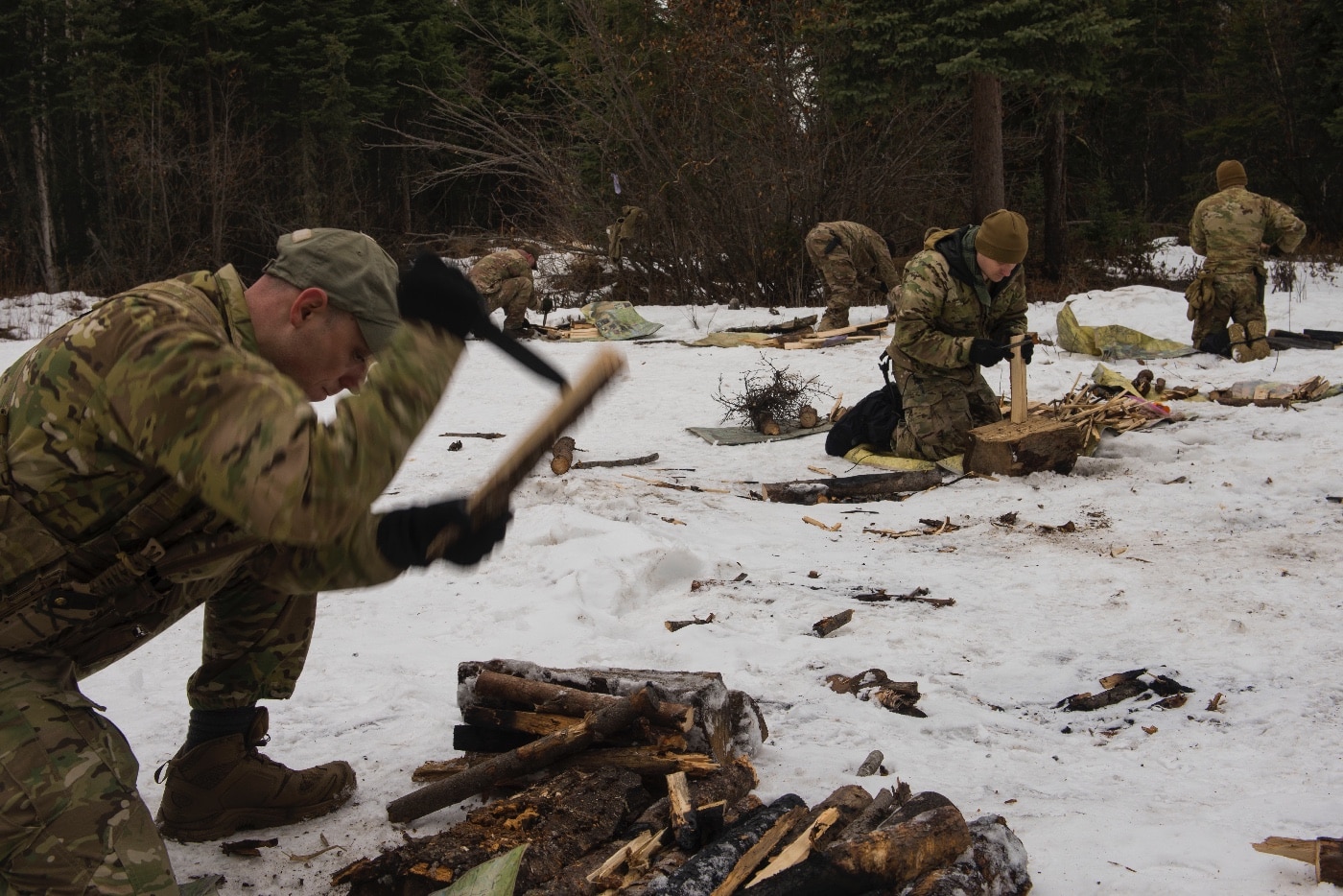
Arctic Survival Training students cut fire wood. Building a fire is imperative to survival in the harsh, cold environment. Image: Airman Aaron Guerrisky/U.S. Air Force
At least thats the theory.
However, failure to do so means dehydration and death.
One end of the shelter forms a triangle big enough to crawl into.
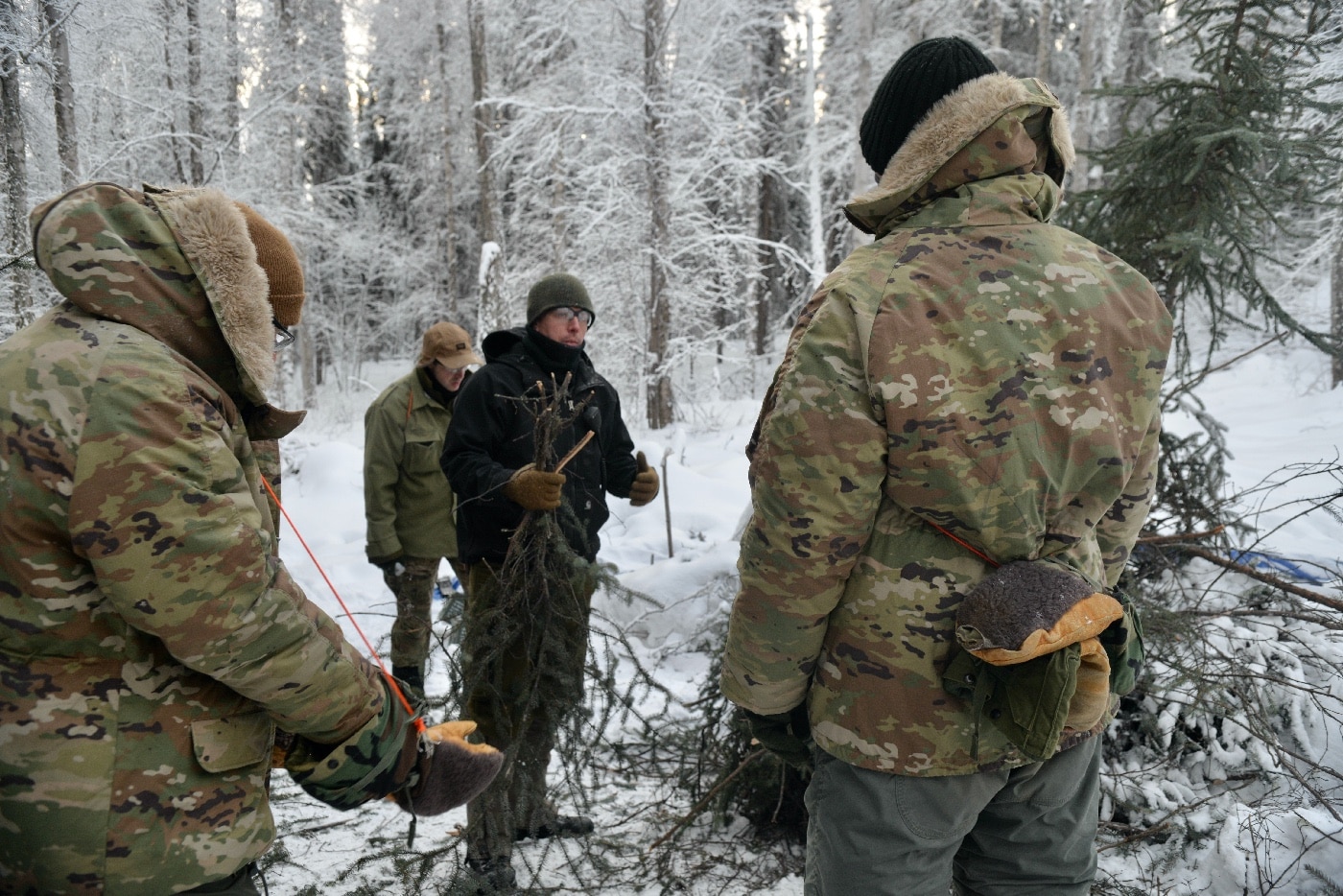
The Arctic Survival School trains airmen and joint partners to survive contingency scenarios in the extreme cold. Image: Department of Defense
The other tapers down to the ground.
You then cover the whole thing with a piece of parachute.
After that, you mound up three or four feet of packed snow on top.
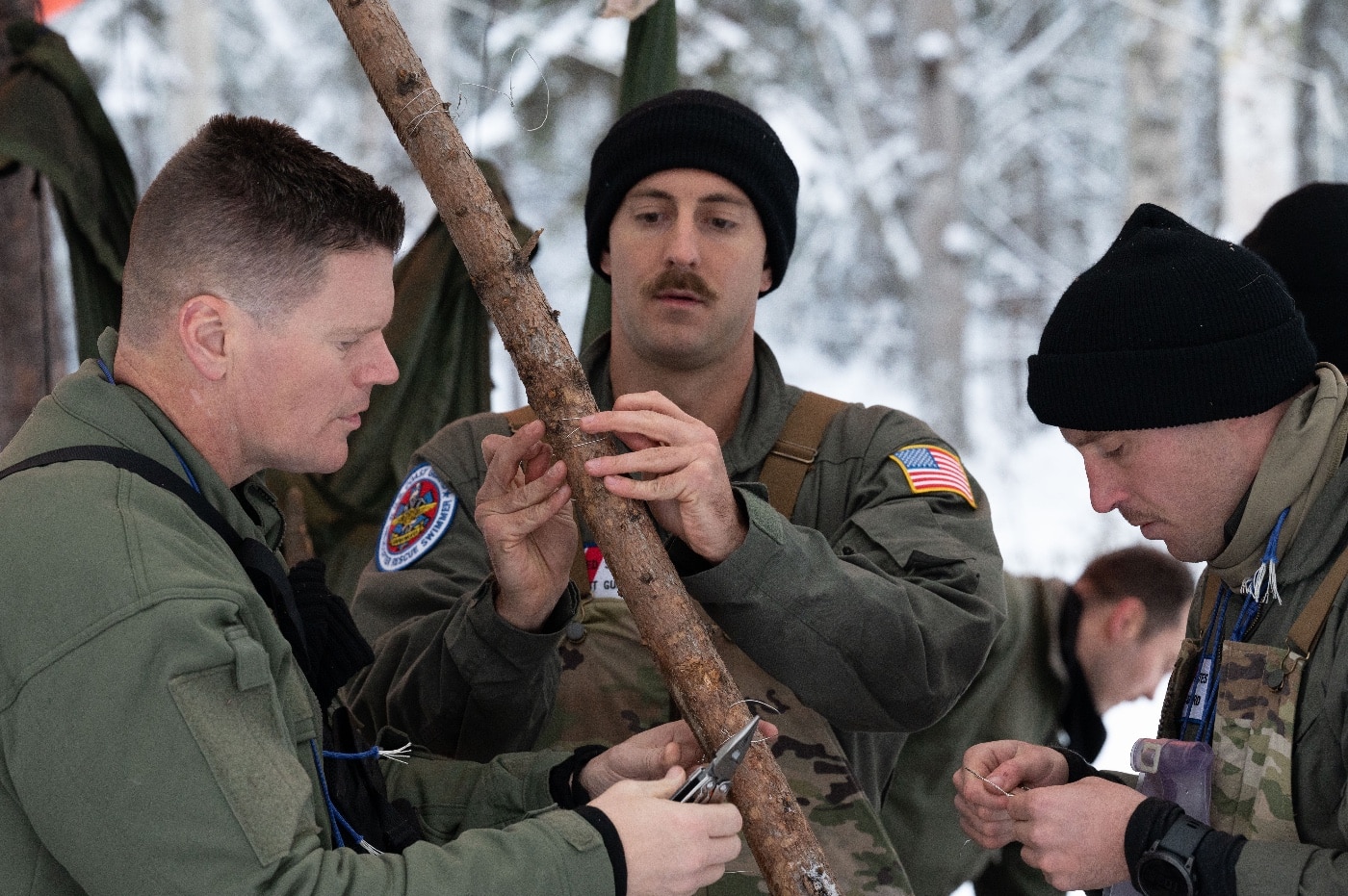
Arctic Survival School students learn how to create snares using a tree branch on Eielson Air Force Base, Alaska. Image: Airman Carson Jeney/U.S. Air Force
Building a decent snow cave takes all day.
As it is Alaska in the winter, much of that day is also dark.
Fortunately, by then the bears are hibernating.
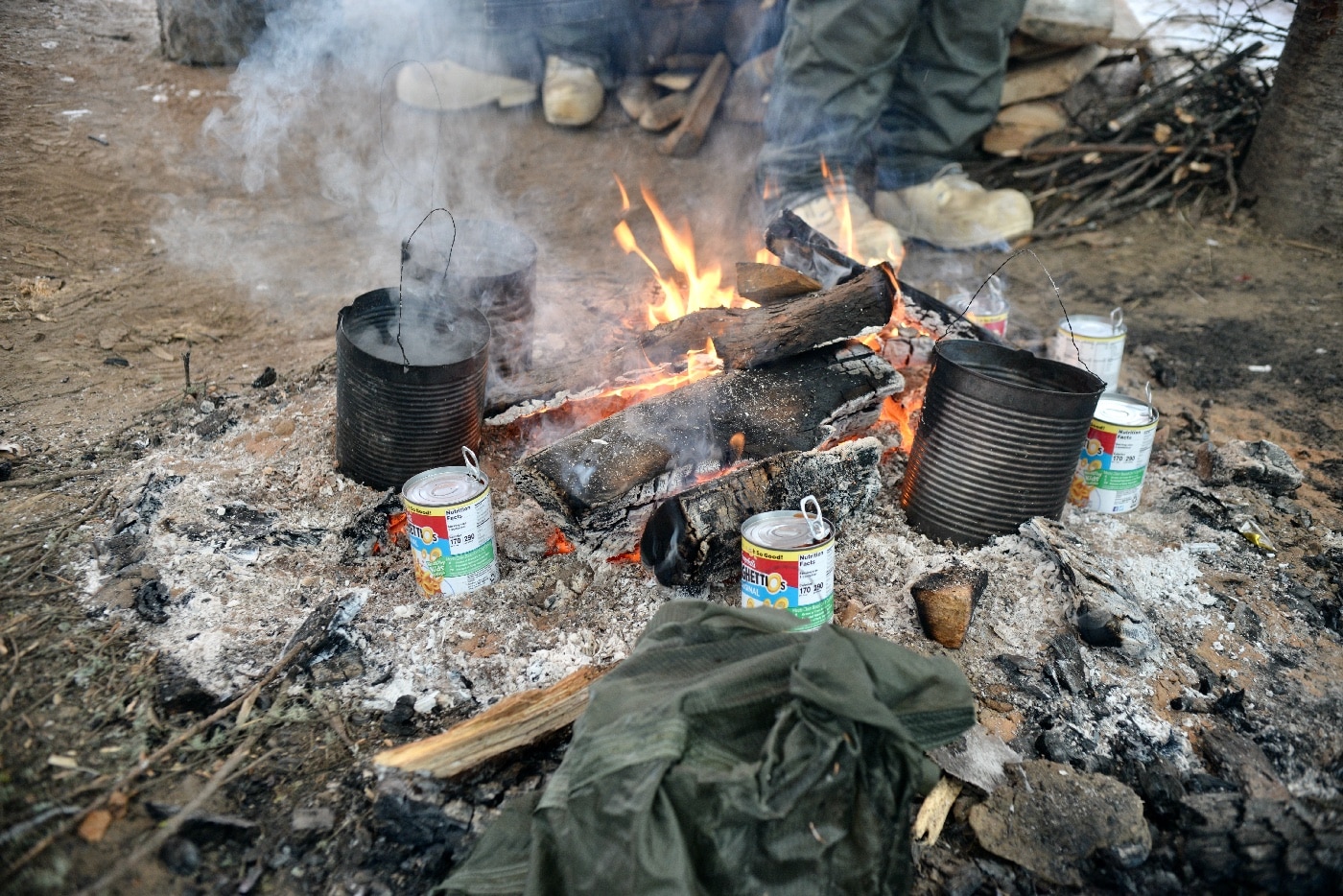
The Arctic Survival School trains airmen to melt snow for water and utilize all available resources for sustenance. Image: Department of Defense
Cover the ground inside and arrange your sleeping bag.
Devote at least half an hour of intense effort to fluffing that thing up.
Your sleeping bag only works if it has plenty of lofty dead air space in it.
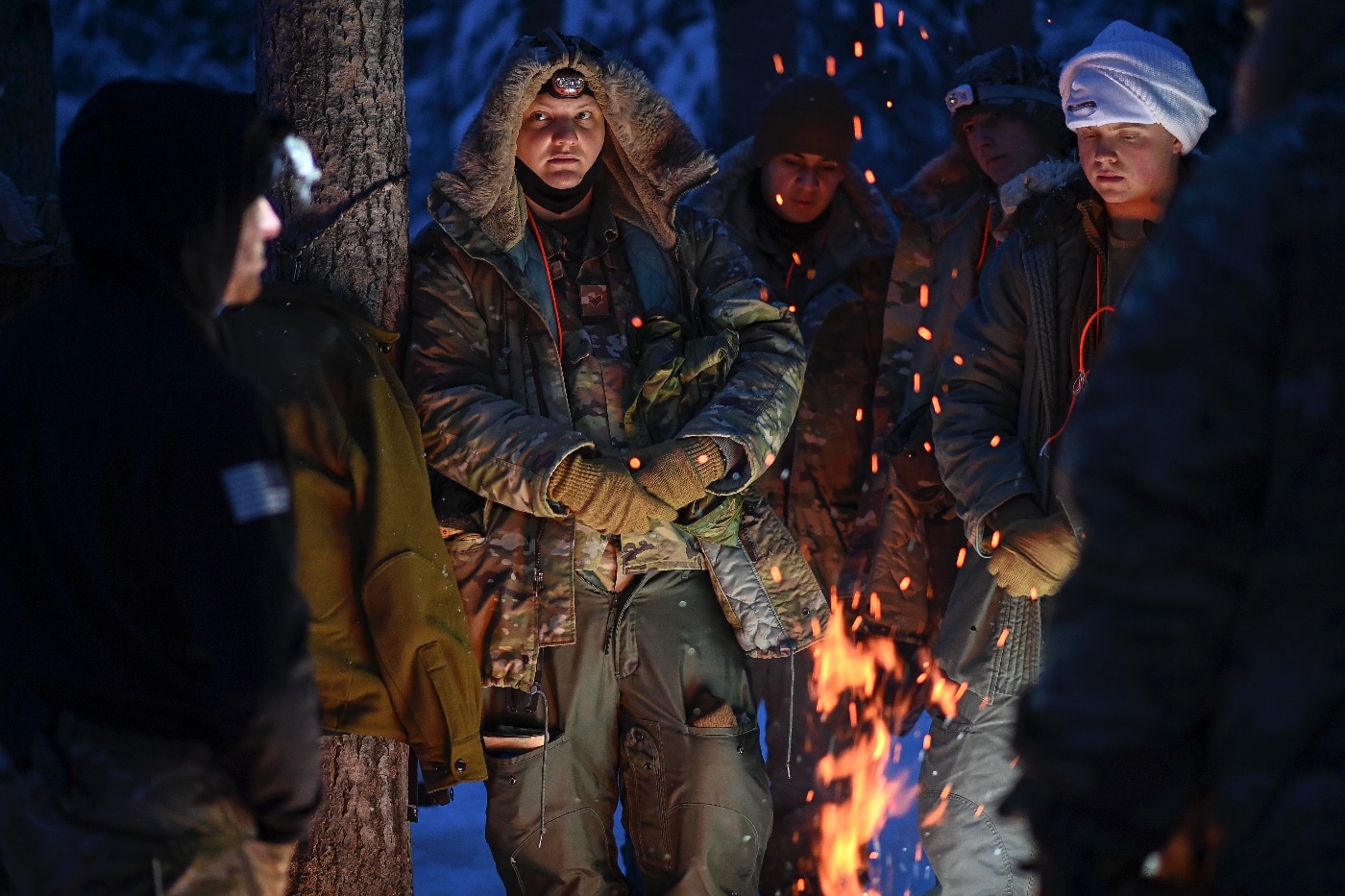
Students of Arctic Survival School listen to Senior Airman David Wolfgram, a SERE instructor, during training on Eielson Air Force Base, Alaska. Image: Senior Airman Keith Holcomb/U.S. Air Force
With the shelter complete you are now pretty spanked and terribly hungry.
Sustenance
You burn an astronomical amount of energy just maintaining your body temperature in those climes.
I was also fortunate enough to snare a big Alaskan rabbit.
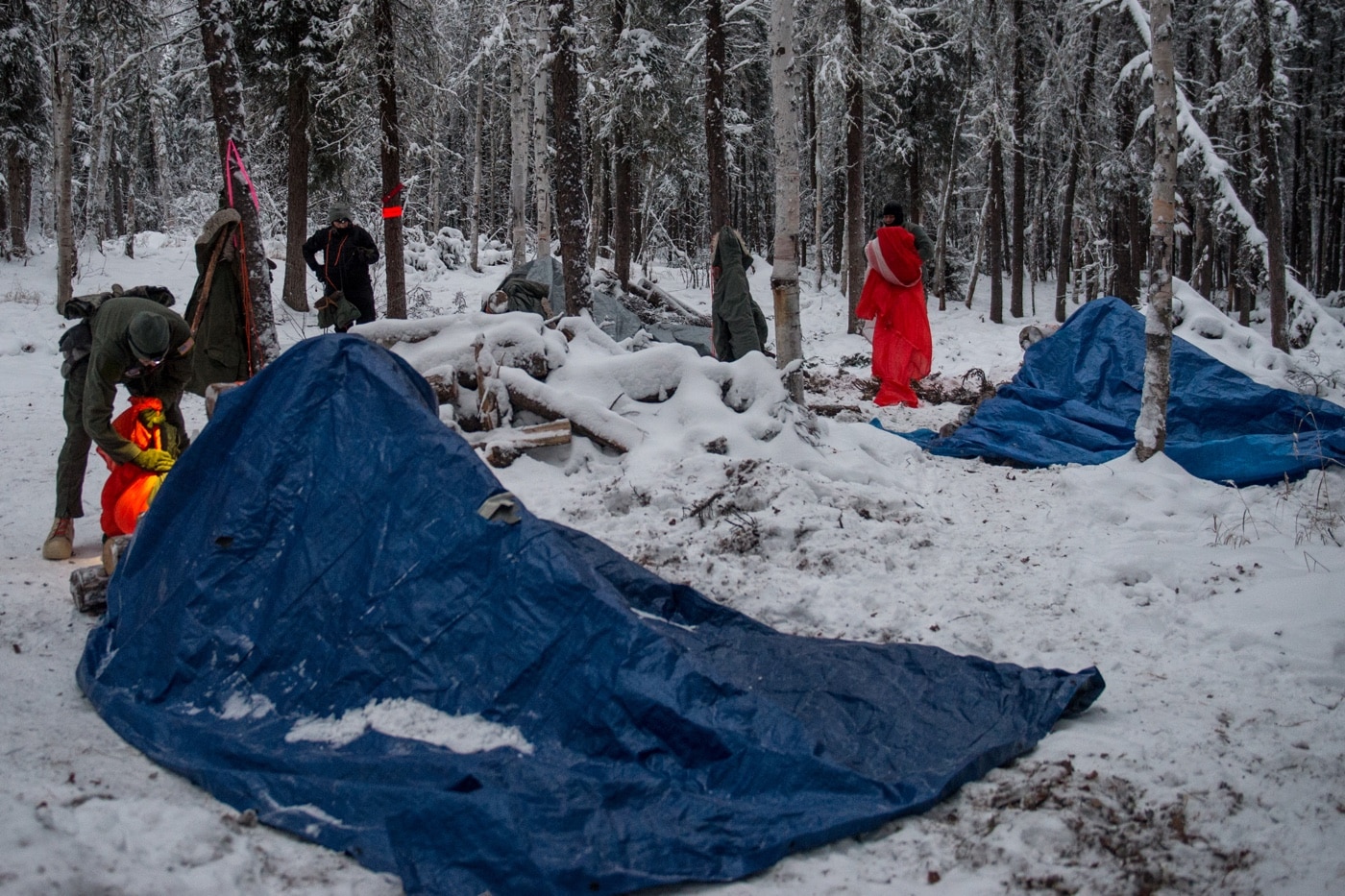
Airman build shelters to sleep in during Arctic Survival School on Eielson Air Force Base. Without shelter, people cannot survive long in the extreme cold. Image: Senior Airman Sean Carnes/U.S. Air Force
Prepping an animal for consumption is an interesting chore in Alaska in wintertime.
Meanwhile, you build a big fire.
When the snow is three feet deep everywhere, that brings its own challenges.
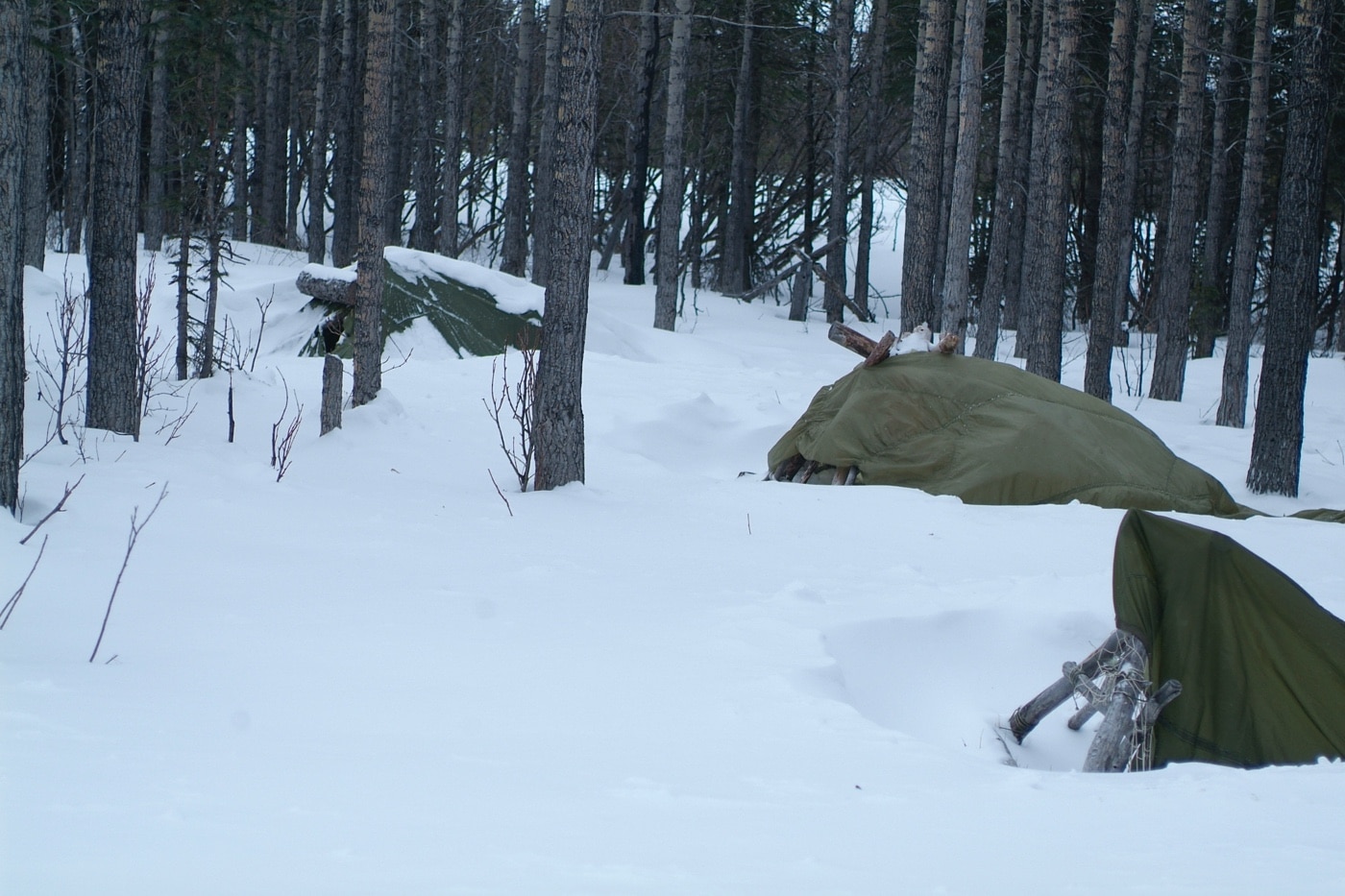
Shelters are constructed out of tree branches, an old parachute and snow. This is one of the many survival skills students learn. Image: Department of Defense
You keep adding snow until you have a can full of boiling water.
This also takes about forever.
As the beast is by now deep frozen, this is disturbingly easy.
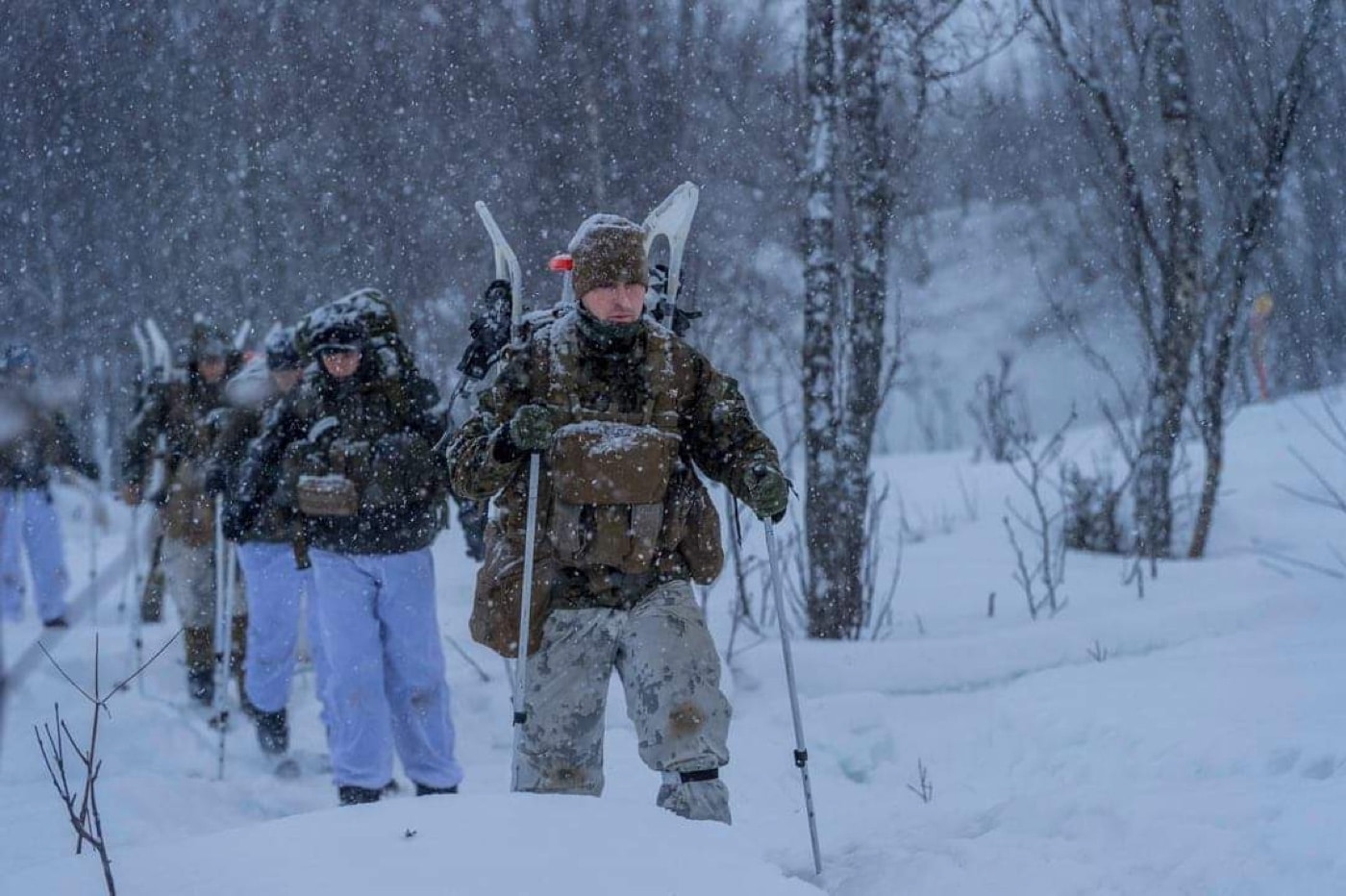
U.S. Marines train with NATO allies in an arctic survival course. With the Marines were Belgian paratroopers, Netherlands Royal Marines and German troops. Image: U.S. Marine Corps
You then do the same thing with each leg.
Each piece then briefly goes into the boiling water.
After a quick scalding the skin comes right off.
You then smack the rear half over the stump to break off the frozen guts as a single unit.
These you save as bait for your next set of traps.
At that point, you have two meaty chunks of hard-frozen rabbit.
These go back into the boiling water for a while.
All little animals like these are full of parasites.
Heat is the only thing that sterilizes them.
While the rabbit was boiling, I resolved to dry out my socks.
I got the fire going as big as I could manage and then stuck my feet near it.
I have pretty average-sized feet.
That tasted about as good as it sounds.
However, it was hot and it was filling.
That stuff was literally inedible.
I lit a candle for illumination, though that did nothing to warm the place up.
I then shivered for about two hours straight.
You get a little baseline heat from the ground, and packed snow is a surprisingly good insulator.
My little thermometer informed me that it was 43 degrees below zero.
The following morning it was time to pack up and head home.
I ate chili until I could barely walk and then dragged myself upstairs to the shower.
Our house was heated via a central system that pumped hot ethylene glycol to all the structures on post.
Hot water came from a heat exchanger in the basement and would run literally forever.
I spent the next two hours basting in the shower until I could no longer stand.
I did learn a lot at Cool School.
I also learned that I never again wish to eat boiled rabbit.
All in all, Id say those were cheap lessons.




